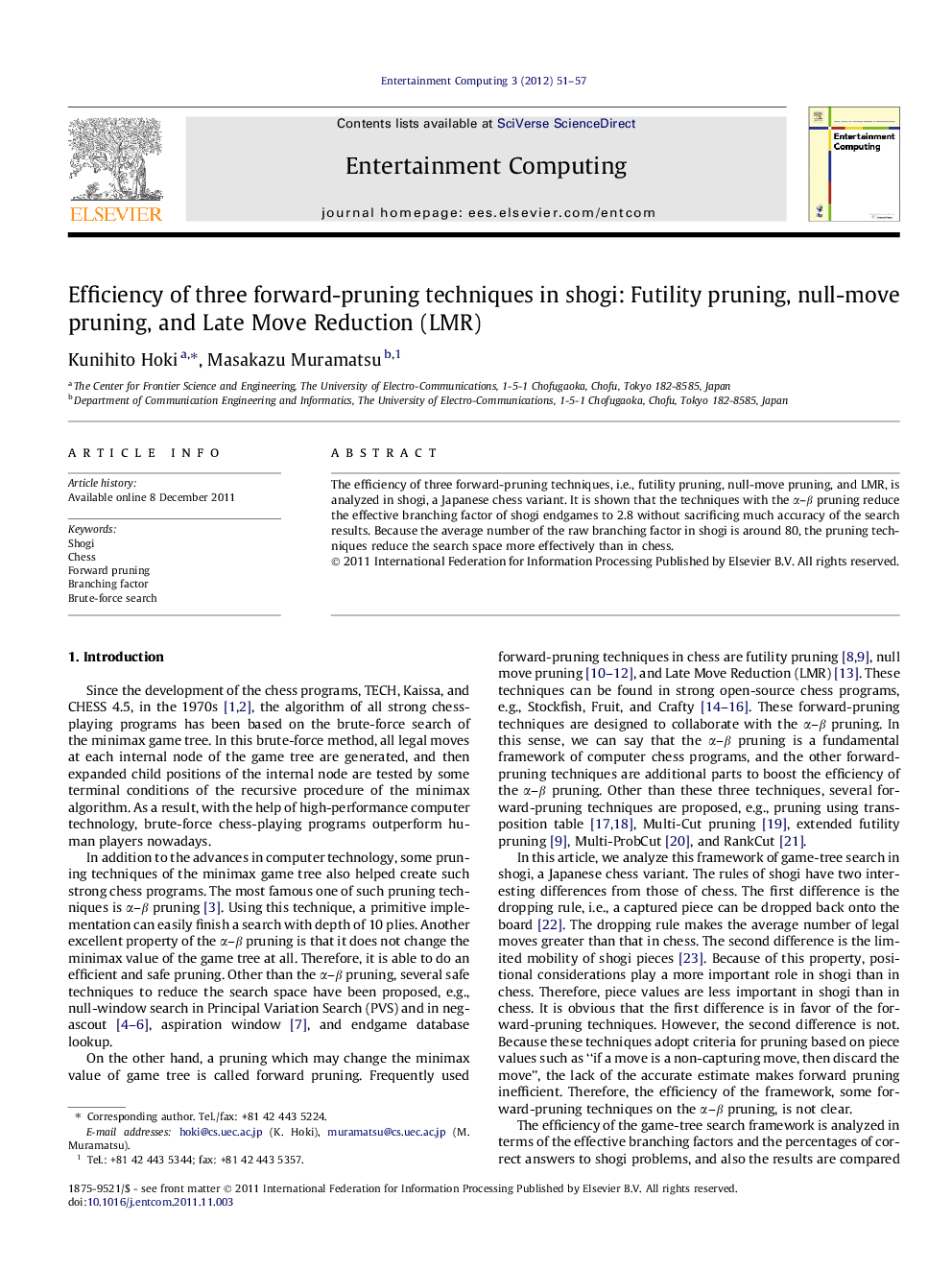| Article ID | Journal | Published Year | Pages | File Type |
|---|---|---|---|---|
| 381907 | Entertainment Computing | 2012 | 7 Pages |
Abstract
The efficiency of three forward-pruning techniques, i.e., futility pruning, null-move pruning, and LMR, is analyzed in shogi, a Japanese chess variant. It is shown that the techniques with the α–β pruning reduce the effective branching factor of shogi endgames to 2.8 without sacrificing much accuracy of the search results. Because the average number of the raw branching factor in shogi is around 80, the pruning techniques reduce the search space more effectively than in chess.
Keywords
Related Topics
Physical Sciences and Engineering
Computer Science
Artificial Intelligence
Authors
Kunihito Hoki, Masakazu Muramatsu,
